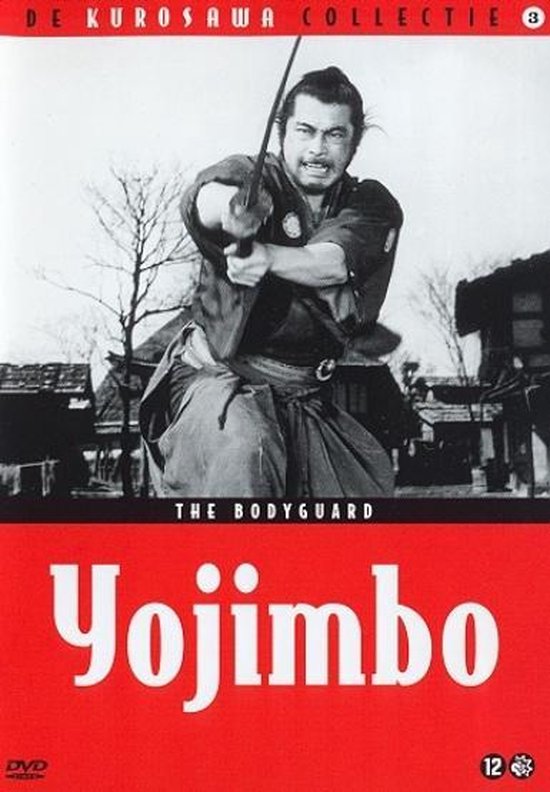Yojimbo's fayth statue in the Cavern of the Stolen Fayth. Yojimbo is a colossal ornamental samurai wielding a katana, clad in colorful robes. He is accompanied by his dog, Daigoro. His fayth is bound by ribbons, which say 'SEAL' in Yevon script. On his fayth statue his sword and shield say 'Mea Culpa' in Spiran and Yevon scripts. YOJIMBO now streaming on FilmStruck - www.filmstruck.com The incomparable Toshiro Mifune stars in Akira Kurosawa’s visually stunning and darkly comic Yojimbo.
'I think Usagi Yojimbo is one of the most original, innovative, well-executed comicbooks anywhere to be found. Stan's style of artwork, his crisp incisive writing, and his thoroughly professional pacing, all done in a relaxed and absorbed manner, have provided comics with something so rarely seen in this field--a new literary and artistic approach to illustrated storytelling.'
Stan Lee
Enjoy the Read!
Usagi Yojimbo, first published in 1984, continues to this day.

Usagi Yojimbo is one of the longest independent serialized comic book series in existence.
Yojimbo Barding

Stan Sakai , the sole creator, author, and artist who is best known for his series Usagi Yojimbo, the epic saga of Miyamoto Usagi, asamurairabbit living in late-sixteenth and early-seventeenth-century Japan. Since then, Stan Sakai has received numerous awards for Usagi Yojimbo including the National Cartoonists Society Award, multiple Eisner Awards, the Parents' Choice Award, and Harvey Award for Best Cartoonist.
Yojimbo Final Fantasy
The Samurai
Learn more about the unique comic book series created by Stan Sakai.
The Cast

Browse through the information compiled around each character in the series.
The Space Series

Check out Stan's comic adventures - Space Usagi!
Ironic, that having borrowed from the Western, Kurosawa inspired one: Sergio Leone's 'A Fistful of Dollars' (1964), with Clint Eastwood, is so similar to 'Yojimbo' that homage shades into plagiarism. Even Eastwood's Man With No Name is inspired, perhaps, by the samurai in 'Yojimbo.' Asked his name, the samurai looks out the window, sees a mulberry field, and replies, 'Kuwabatake Sanjuro,' which means '30-year-old mulberry field.' He is 30, and that is a way of saying he has no name.
He also has no job. The opening titles inform us that in 1860, after the collapse of the Tokugawa Dynasty, samurai were left unemployed and wandered the countryside in search of work. We see Sanjuro at a crossroads, throwing a stick into the air and walking in the direction it points. That brings him to the town, to possible employment, and to a situation that differs from Hollywood convention in that the bad guys are not attacking the good guys because there are no good guys: 'There is,' the critic Donald Richie observes, 'almost no one in the whole town who for any conceivable reason is worth saving.' It's said Kurosawa's inspiration was Dashiell Hammett's novel Red Harvest, in which a private eye sets one gang against another.
Sanjuro's strategy is to create great interest about himself while keeping his motives obscure. He needs money and so presumably must hire himself out as a bodyguard to one of the two warring factions. There is the silk dealer and the sake merchant, both with private armies, who occupy headquarters at either end of the town. In between, the townspeople cower behind closed shutters and locked doors, and the film's visuals alternate between the emptiness of the windswept street, shots looking out through the slats of shutters and the chinks in walls, and shots from outdoors showing people peering through their shutters.
Yojimbo Trailer
Richie, whose writings on Kurosawa are invaluable, notes that Kurosawa's shots are always at right angles to what they show; they either look straight up and down the street, or straight into or out of the buildings, and 'there are very few diagonal shots.' The purpose may be to emphasize the simplicity of the local situation: Two armies face each other, the locals observe the main street as if it's a stage, and the samurai himself embodies the diagonal -- the visitor who stands at an angle to everyone and upsets the balance of power. Indeed, in a crucial early scene, as the two sides face each other nervously from either end of the street and dart forward fearfully in gestures of attack, Sanjuro sits high above the action in the central bell tower, looks down and is vastly amused.
